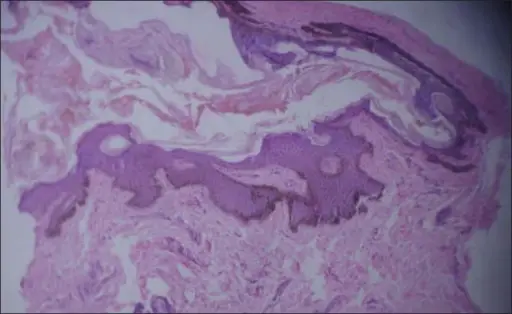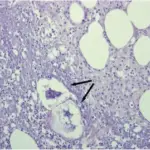Hidradenitis suppurativa is an ailment of the terminal follicular epithelium in the skin.
What is the Pathology of Hidradenitis Suppurativa?
The pathology of hidradenitis suppurativa is:
-Etiology: The cause of hidradenitis suppurativa is idiopathic.
-Genes involved: Gamma-secretase genes PSENEN, PSEN1, and NCSTN.
-Pathogenesis: The sequence of events that lead to hidradenitis suppurativa is not clearly understood.
-Morphology: The morphology associated with hidradenitis suppurativa shows the incidence of typical skin microbiota.
-Histology: The histology associated with hidradenitis suppurativa shows infundibulum hyperkeratosis.
How does Hidradenitis Suppurativa Present?
Patients with hidradenitis suppurativa typically more in females than males present at an age range of 11 to 50 years. The symptoms, features, and clinical findings associated with hidradenitis suppurativa include chronic inflammation, follicular occlusion, progressive scarring, and mucopurulent discharge.
How is Hidradenitis Suppurativa Diagnosed?
Hidradenitis suppurativa is diagnosed through the clinical presentation. Laboratory studies- CBC count, C-reactive protein assay, serum multiphasic analysis. Imaging studies- dermal and hair follicles ultrasonography.
How is Hidradenitis Suppurativa Treated?
Hidradenitis suppurativa is treated through medical care anti-inflammatory/antiandrogen therapy, biological therapy, smoking cessation, and warm compresses.
What is the Prognosis of Hidradenitis Suppurativa?
The prognosis of hidradenitis suppurativa is fair.



